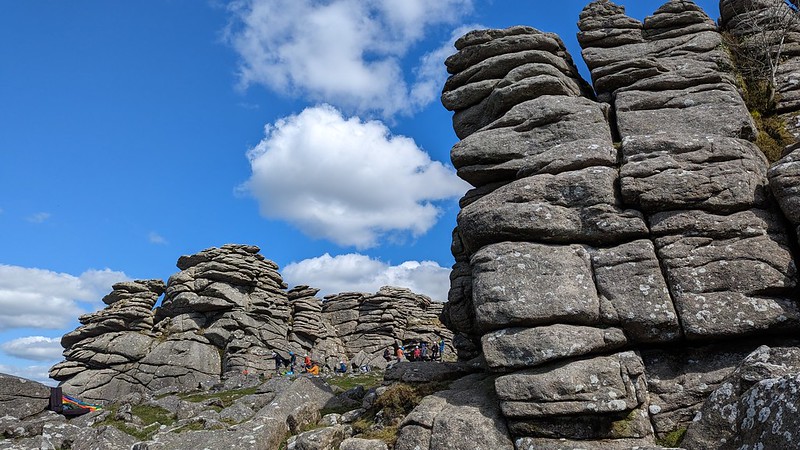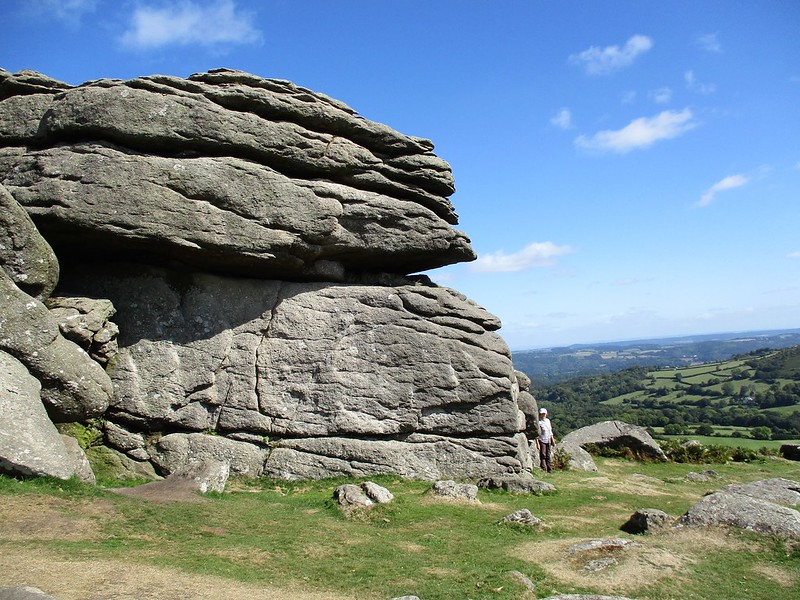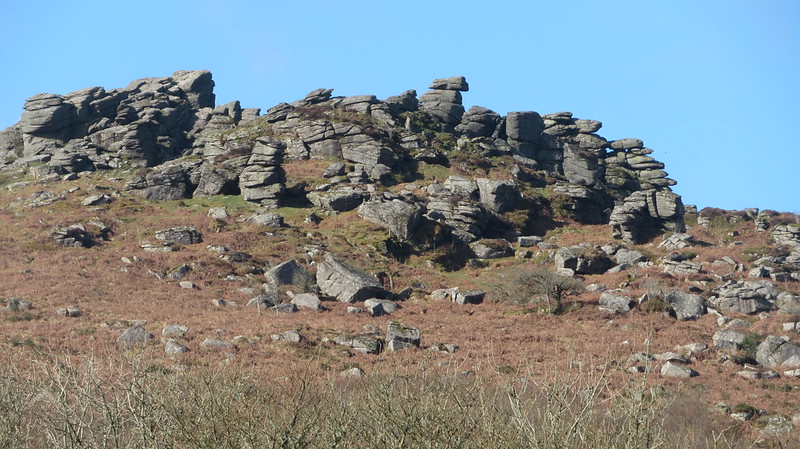TORS OF DARTMOOR
a database of both lesser- & well-known rocks and outcrops
Hound Tor (Manaton)Great Hound Tor, Hundatora, Houndtor Rocks, Houndter Rocks, Hounter Tor, Hound Tor Rocks, Houndtordown Rock, Clitter Rocks
 One of Dartmoor's best-known honeypots for visitors is the magnificent Hound Tor in the Parish of Manaton that is easily accessed via a minor road branching off the B3387 at Harefoot Cross towards Heatree. This is a superb granite tor that is said to have inspired the writing of the 'The Hound of the Baskervilles', by Sir Arthur Conan Doyle in 1901. One of the earliest descriptions of the site comes in another book this edited by Henry Edmund Carrington in 1834, where he accredits the Reverend Mr Jones with this eloquent account "a magnificent group of rocks, like the remains of some ruined castle rising in the horizon with its beetling front from the dreary plain, its toppling crags having the appearance of pinnacles which the hand of time has loosened and as it throws its dark shade across the heath, it increases the natural wildness of the desolate downs in the midst of which it is situated."  Writing just fourteen years later Samuel Rowe whilst describing the tor as "one of the most interesting tors on the moor" explains that "The top of the hill is flanked by two colossal walls, piled up of huge granite masses, sixty, eighty and in some places probably a hundred feet high with an open space between forming an esplanade where Titan sentinels might have paced along, or rebel giants might have held a council of war." This being the characteristic appearance of what is known as an 'avenue tor' one with a missing middle section that leaves gaps between the main stacks.  William Crossing (1909) says more of it; "This tor, certainly one of the finest on the moor, consists of three main piles, rising to a considerable height above the ground. Around these are smaller masses of granite, the tor covering altogether a large area. The view which the visitor will obtain from it will well repay him for any trouble he may have taken to reach it." Eric Hemery (1983) heaps even more praise on the tor not only describing it as "the best and finest in Bovey Country- steeped in the lore and legend of the moor" but that a previous commentator Sabine Baring Gould speaks of it as "a noble mass of rocks. It derives its name from the shape assumed by the blocks on the summit, that have been weathered into forms resembling the heads of dogs peering over the natural battlements and listening to hear the merry call of the horn." Hemery explains that the north-eastern rocks of the tor are known as 'Clitter Rocks', their sprawling nature suggesting that an even grander tor once stood here, and what is left today are just some of Hound Tor's remains.  Very popular with rock climbers access to the tor's avenue is but a 5-minute stroll from its own car park. There is also a deserted yet very well-preserved medieval village to the south east of the main rocks that is well worth a visit. According to Newman (2011) the site was extensively excavated by E Marie Minter in the 1960s to reveal what he describes as "large longhouses, probable domestic and out-buildings, curtilage and three barns containing grain drying areas". Hound Tor also boasts a 'Cairn Circle & Cist' at about 100 metres to the south-west as shown on modern day OS maps. This is a nice place to get away from the crowds that can accumulate at the tor, however, nowadays the cist is in a poor condition.
| ||||||||||||||||||||||||||||